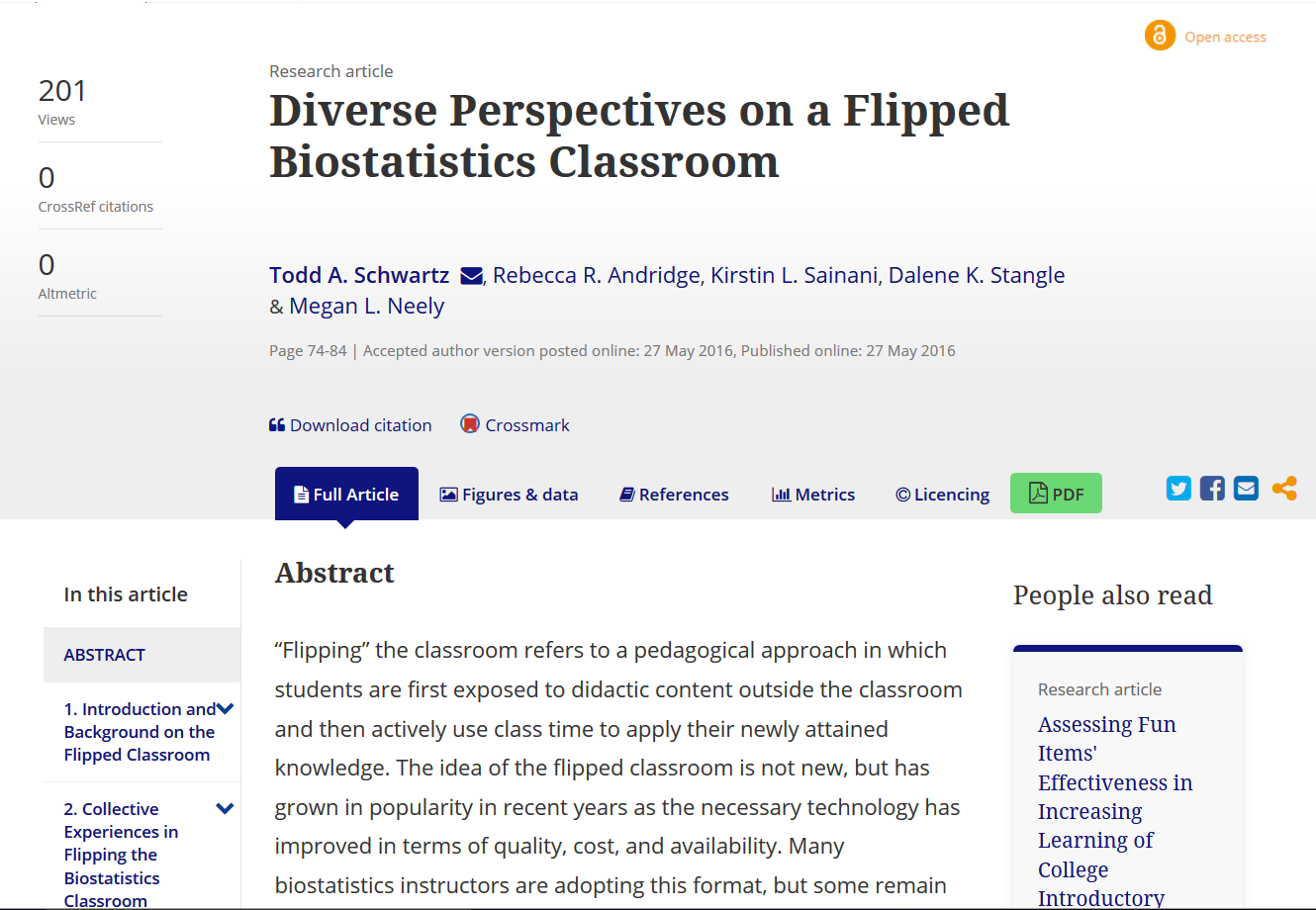
This article is a synthesis of a panel discussion at the 2014 Joint Statistical Meetings on the flipped classroom. The article discusses it solely from the perspective of Biostatistics classes, though they offer some references for the flipped classroom in a more general setting. A flipped classroom is a course where the traditional didactic lectures are recorded and watched at home and the homework that would normally be done at home is done instead in the classroom. This homework in a Biostatistics class often takes the form of active learning in small groups, such as critiquing published research studies or conducting analyses on real world data sets. The key component, according to the authors, is the in class interactions during these assignments. Students learn from each other as they work in groups.
Now you could do active learning in a traditional course format. What a flipped classroom does is increases the emphasis and the amount of time spent in active learning.
The common theme of the paper is that the flipped classroom has been successfully applied in a variety of settings. It is not a “one size fits all” approach, but rather can be adapted to the needs of the particular class. Some students may not like the flipped classroom format, and you shouldn’t underestimate the amount of time needed to prepare the videotaped lectures (one rule of thumb is ten hours of work for every hour of video). Still the student reactions and the instructors perceptions of the flipped classroom are generally positive.
Todd A. Schwartz, Rebecca R. Andridge, Kirstin L. Sainani, Dalene K. Stangle, and Megan L. Neely. “Diverse Perspectives on a Flipped Biostatistics Classroom”
Journal of Statistics Education Vol. 24 , Iss. 2, 2016. Available in html format.
You can find an earlier version of this page on my blog.